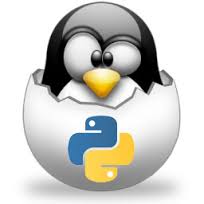 |
CS 3723 Programming Languages |
Recursive Descent Parsing | |
Overview: A recursive descent parser is a top-down parser, so called because it builds a parse tree from the top (the start symbol) down, and from left to right, using an input sentence as a target as it is scanned from left to right. The actual tree is not constructed but is implicit in a sequence of function calls. (In the same way the actual tree is implicit in the sequence of reductions used for a shift-reduce parser.) This type of parser was very popular for real compilers in the past, but is not as popular now. A recursive descent parser is usually written entirely by hand and does not require any sophisticated tools. It is a simple and effective technique, but is not as powerful as some of the shift-reduce parsers -- not the one presented in class, but fancier similar ones called LR parsers. There also exists a table-driven type of top-down parser that is sometimes used. This parser uses a recursive function corresponding to each non-terminal symbol in the language. For simplicity one often uses the name of the non-terminal as the name of the function. The body of each recursive function mirrors the right side of the corresponding rule. If there are several rule with the same non-terminal at the right side, the code mirrors all those possibilities. In order for this method to work, one must be able to decide which function to call based on the next input symbol. (This parser, like most, looks one token ahead all the time.) Surprisingly, one hard part of even small recursive descent parsers is the scanning: repeatedly fetching the next token from the scanner. It is tricky to decide when to scan, and the parser doesn't work at all if there is an extra scan or a missing scan.
Initial Example: Consider the grammar used before for simple arithmetic expressions
P ---> E E ---> E + T | E - T | T T ---> T * S | T / S | S S ---> F ^ S | F F ---> ( E ) | char |
P ---> E '$'
E ---> T { ( '+' | '-' ) T }
T ---> S { ( '*' | '/' ) S }
S ---> F '^' S | F
F ---> '(' E ')' | char
|
E ---> T '+' E | T |
Recursive Descent Parser Coded in C and in Java:
- First is a "Bare" Parser in C and in Java for the above grammar for arithmetic expressions. This does nothing except absorb the input source file and either respond with "accept" or reject it with an error message. (See the next item for parser runs.)
- Next are Debug Runs
in C and in Java for the above grammar for the arithmetic expressions
(along with a few error entries:
- a + b + c $
- a ^ b ^ c $
- (a + b) * c $
- Finally here is a diagram showing parse trees for the examples above. Notice that the first and third parse trees are different from ones we got before, when we were using left recursion. Let me say it again: The grammar is different, the parse trees are different, but the language is the same. Notice also that the rule for S is the same in the new grammar, since it didn't use left recursion. S involves the ^ operator, so the parse tree for the middle sentence is the same as it was before.

Full-size image: .png, .ps, .pdf.
- During each visit to a node the program is in the body of the function corresponding to the node. Because of the many visits, there are lots of opportunities for inserting semantic actions that will occur at different times during the parse.
- The program can leave information at a node and pick it up or use it or alter it during a later visit to that node.
- It is possible to pass information down the tree along the red arrows, using parameters in the parsing functions. This process is called inheritance.
- It is also possible to pass information up the tree, again along the red arrows, using the ability of a function to return a value. This process is called synthesis. At a given node, information could be assembled from more than one node below a given node.
Revision date: 2014-01-22. (Please use ISO 8601, the International Standard.)